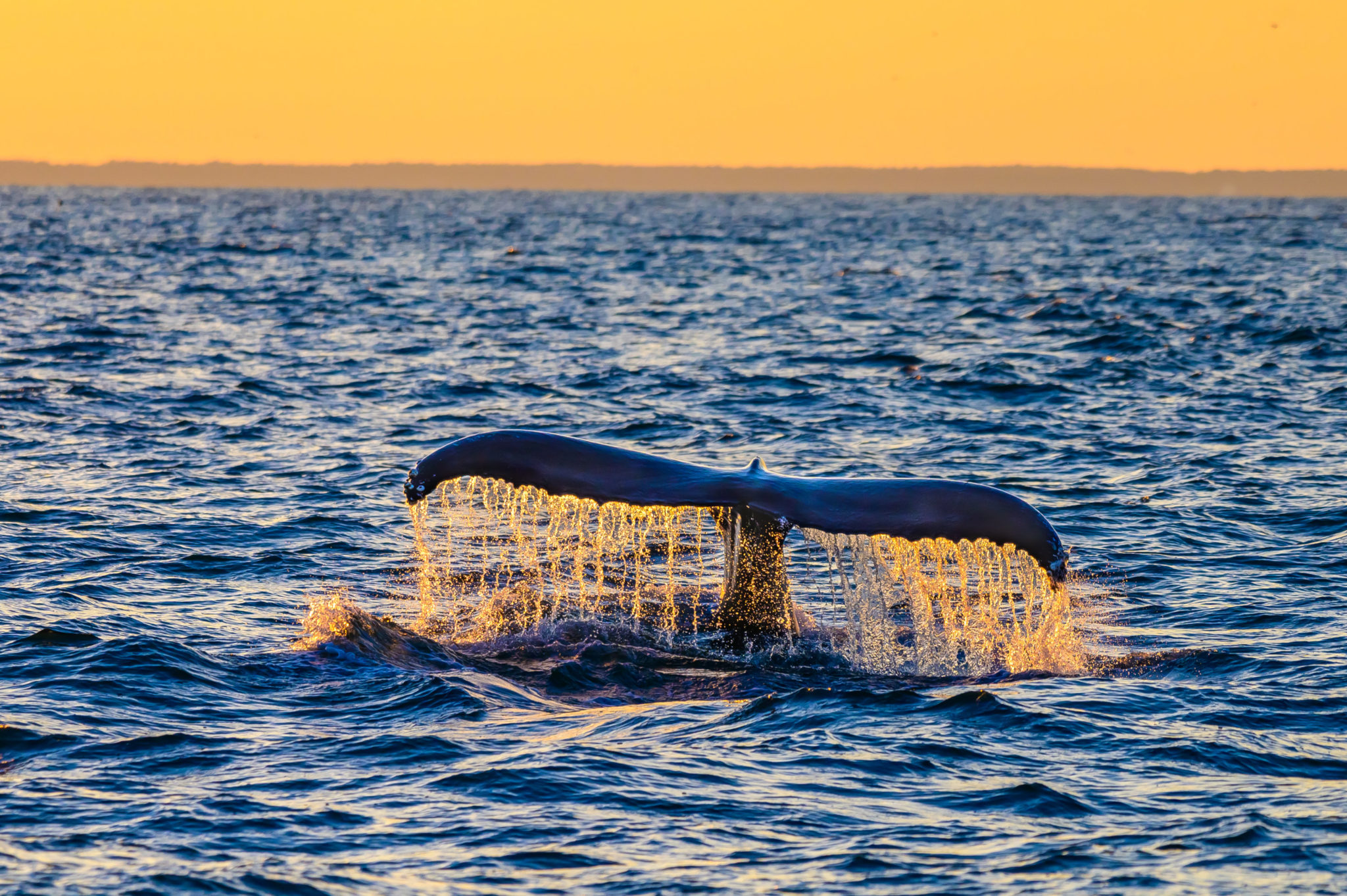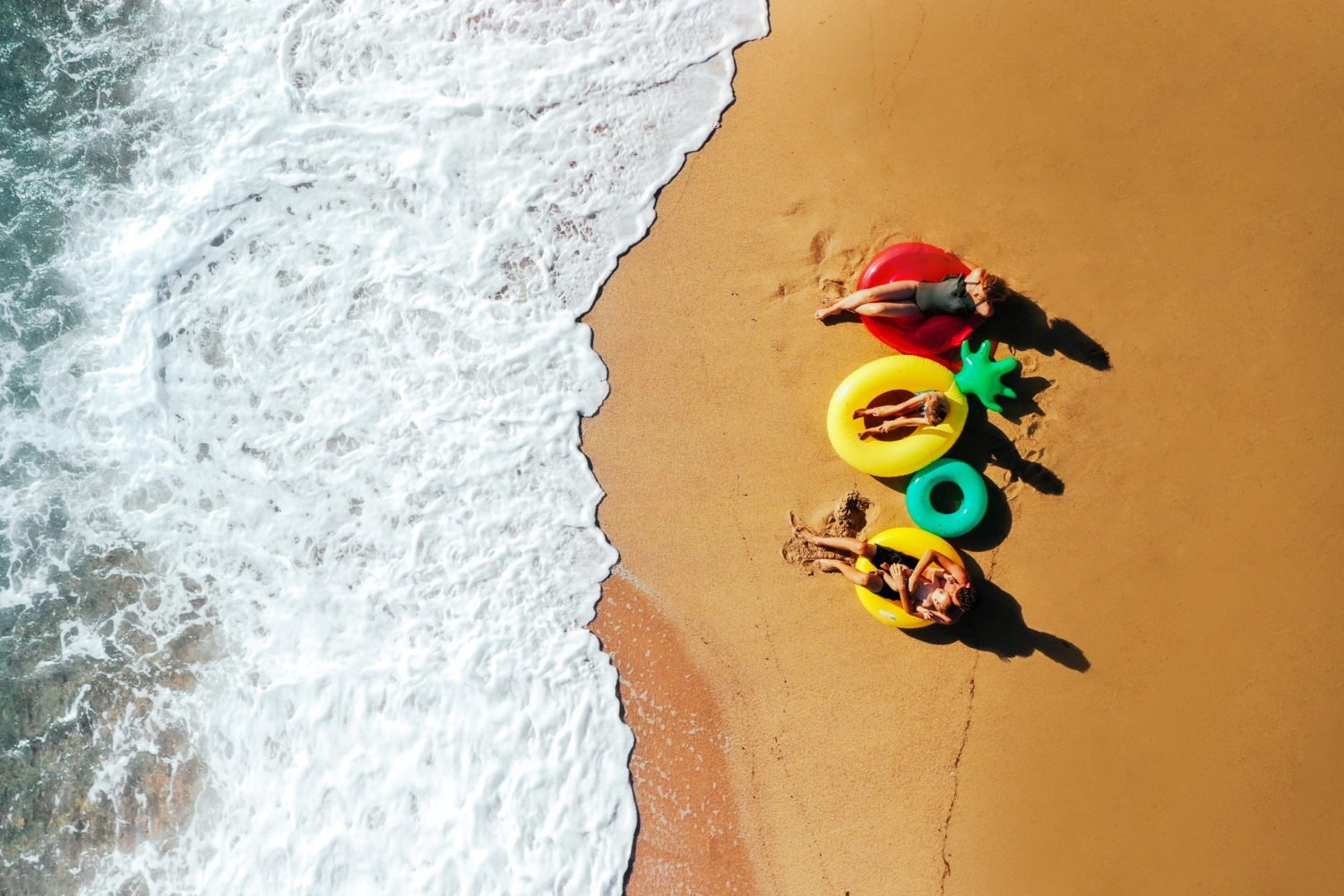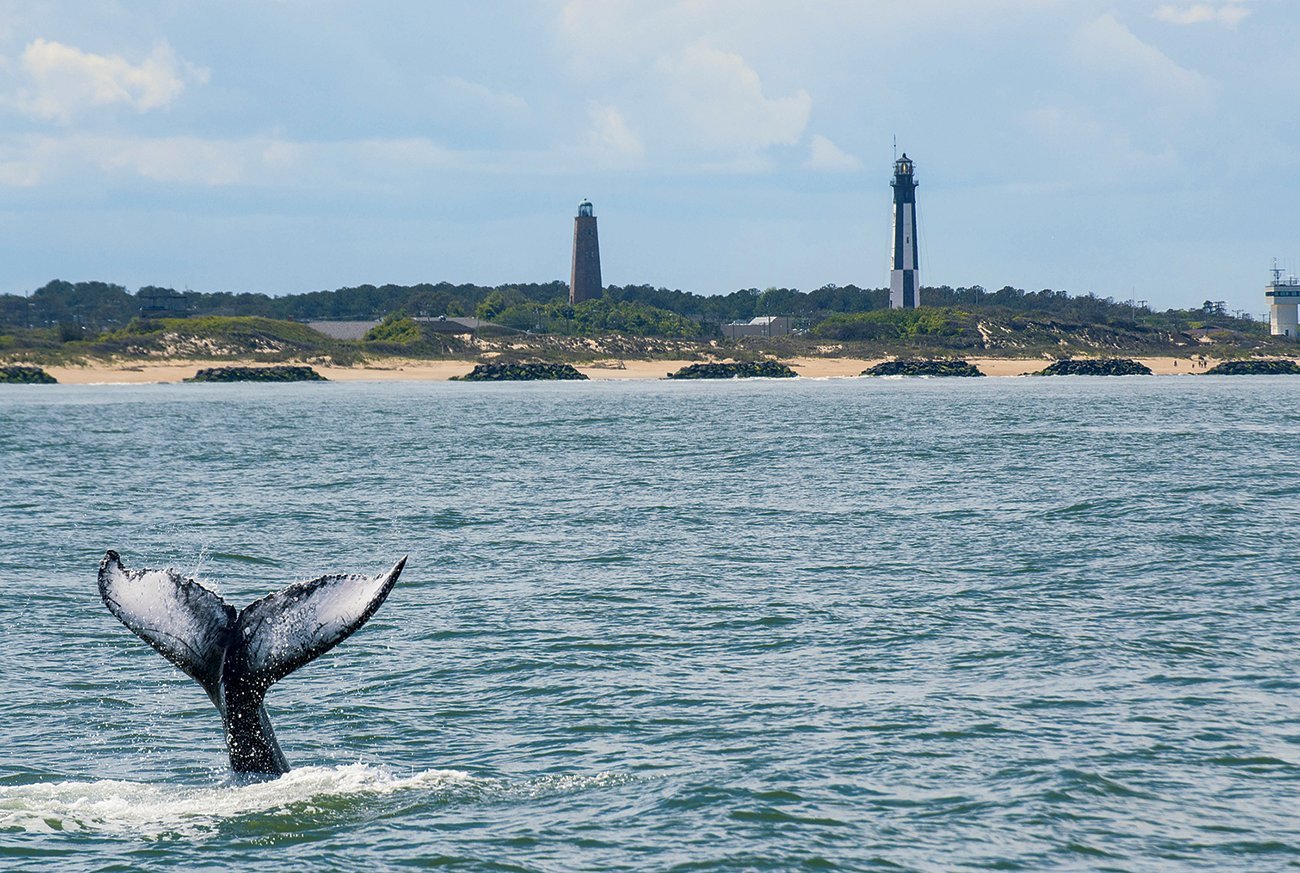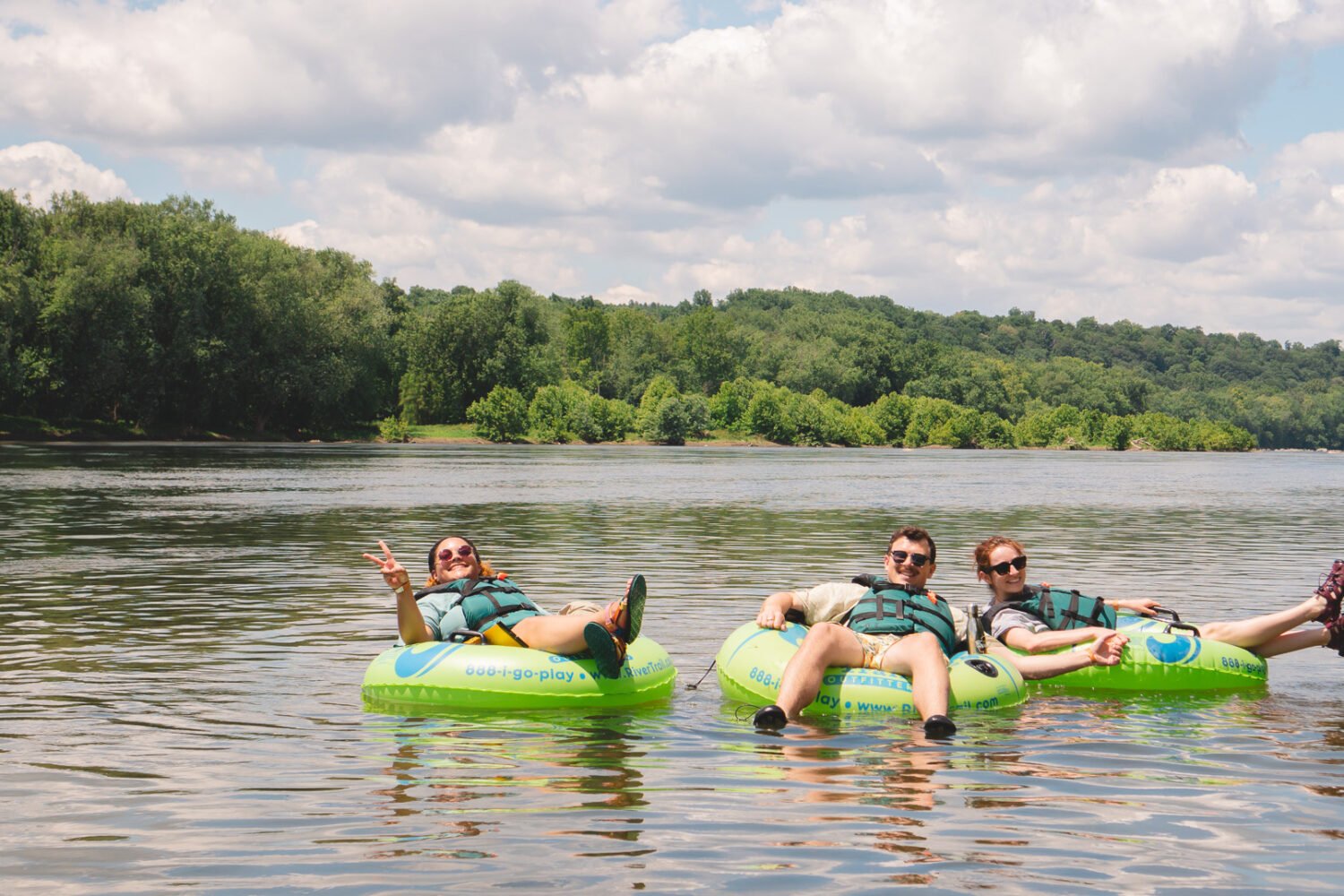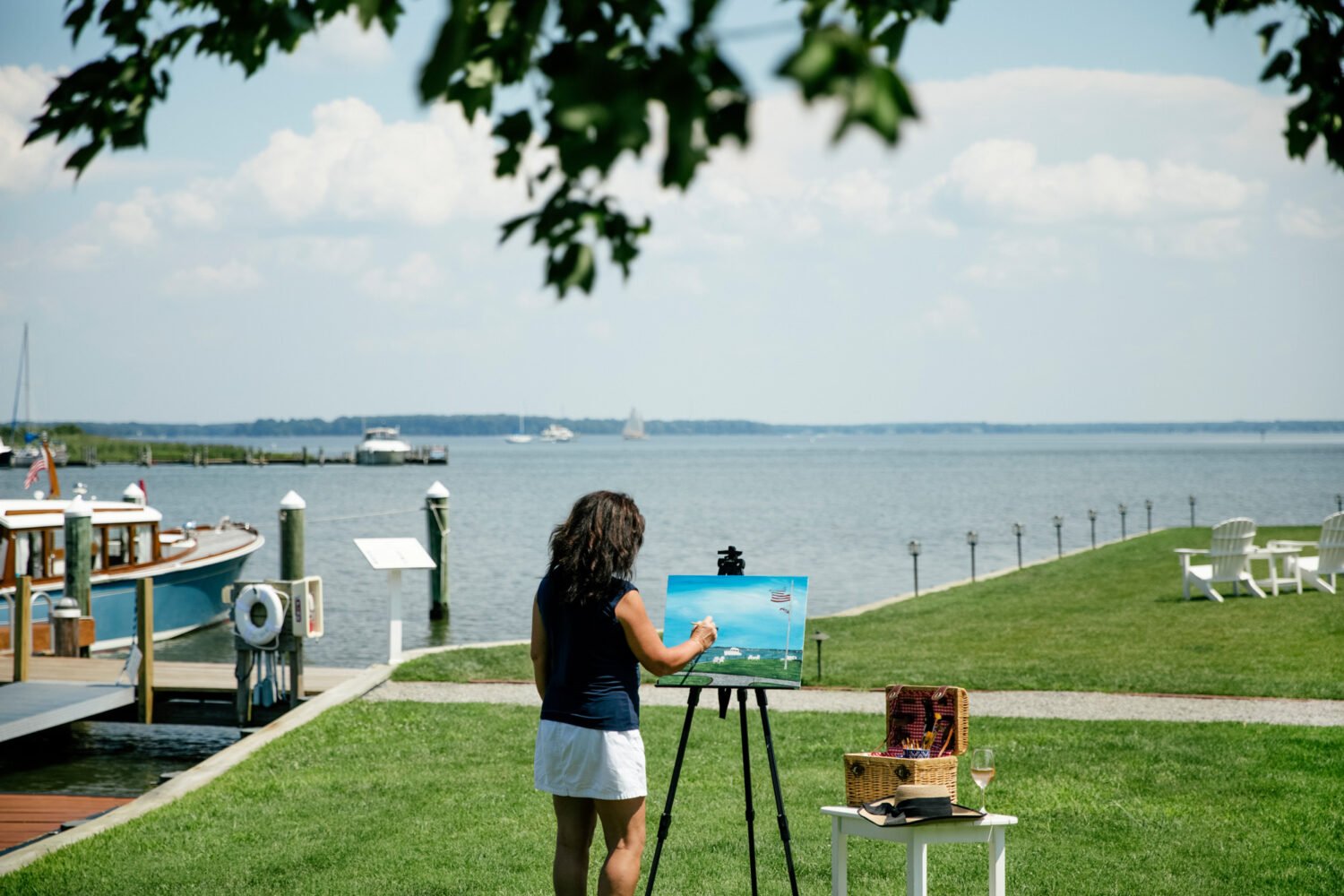Here’s a type of pod to get excited about: January and February are traditionally the best months to see migrating whales off the shore of Virginia Beach. And some whale-watching boats this winter have been spotting the giant creatures almost every day they go out.
“We can’t guarantee wildlife and what they will do, but I can tell you that over the past four weeks, we have had close to 100 percent, if not 100 percent, sightings of whales,” says Michael Mizell, the boat coordinator at the Virginia Aquarium, which will run two-and-a-half-hour whale-watching excursions seven times a week through March 7.
Mizell says that this time of year, whales are migrating south from New England and Canada to warmer waters. Some swim all the way to the Caribbean, where they mate and have calves. But there’s not a lot for humpbacks to eat in tropical waters, Mizell says, so whales that are not of breeding age might hang out around the mouth of the Chesapeake Bay, near Virginia Beach. “In this area, this time of year, we have an abundance of fish called menhaden, a very oily, fish dense. That’s going to be their main source of food here,” Mizell says. “A humpback whale can eat one-and-a-half tons of that fish a day.”
While dolphins are more plentiful in warmer months, they, too, can be spotted on winter boat trips, along with birds and other wildlife. “The other day, our educator told us they saw a harbor seal in the inlet, so sometimes we will see seals,” Mizell says.
While humpbacks are the species spotted most often, whale-watchers in Virginia Beach have occasionally caught sight of fin whales, the second-largest species after the blue whale, and minke whales. The most endangered of all whales is the North Atlantic right whale, and three were reportedly sighted less than 30 miles offshore in mid-January during a Navy-funded whale survey.
To see a whale, you’ll need to board a whale-watching boat. Besides the aquarium’s expeditions, several local companies offer outings, including Rudee Tours. Passage costs about $30 per adult (with discounts for children). Marine experts provide commentary on the voyages. Rudee Tours offers a guarantee that you’ll see a whale—if you don’t, you won’t get a refund, but you can take another cruise for free.
Whales, of course, are protected from the cold by layers of blubber. Humans? “Expect the temperature on the water to feel at least 10 degrees less than on land,” Mizell warns, so “overdress in layers.” (The boats used by the aquarium and Rudee Tours have heated cabins to duck into, plus snack bars that sell hot drinks.) Another thing to note: This time of year, whale-watching excursions on weekend afternoons can be sold out a week in advance—especially given that Covid rules have limited capacity—although you can usually get a reservation for a weekday outing or weekend morning a day or two before.
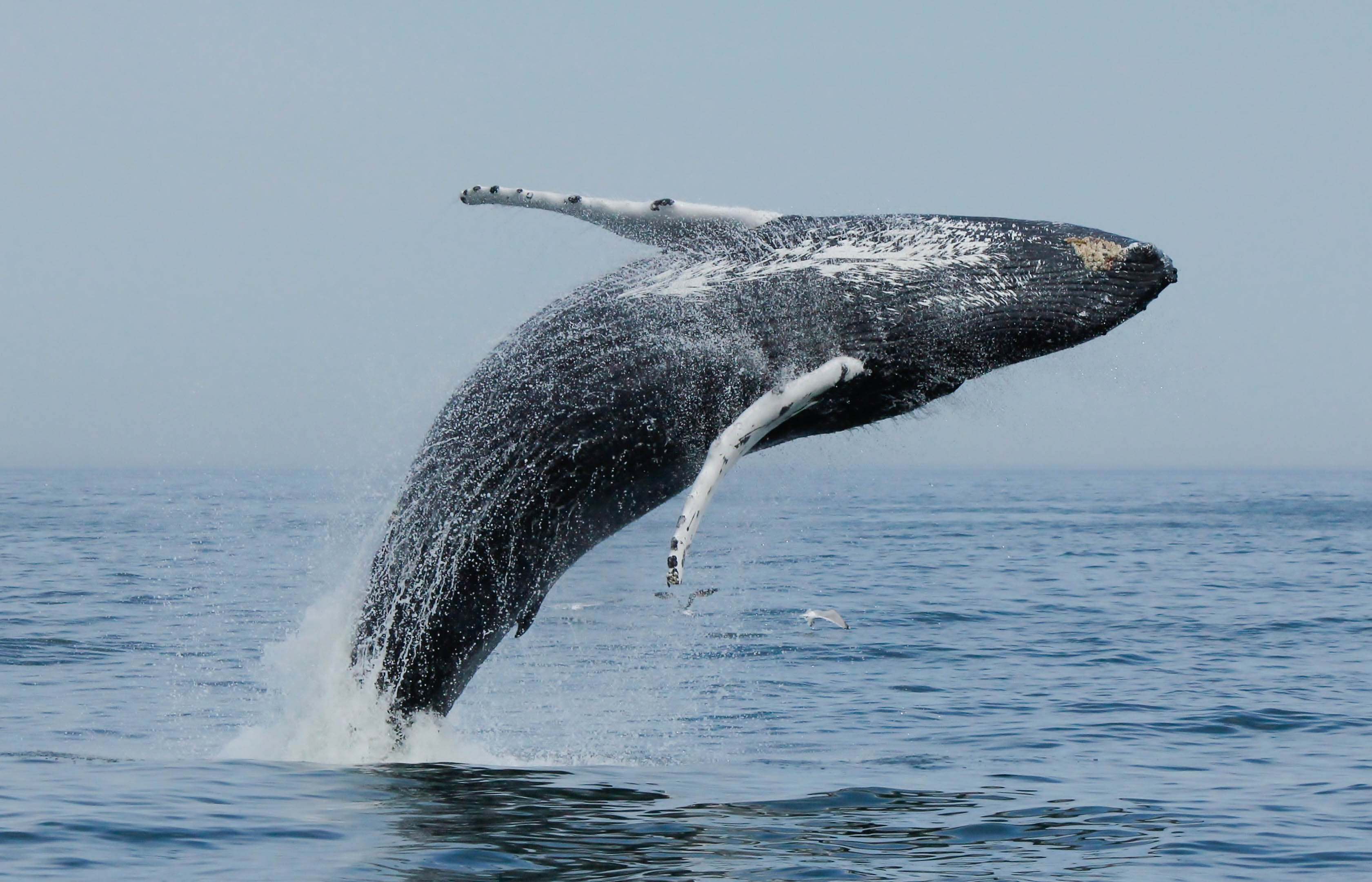
Keep in mind, before you drive the three-plus hours to Virginia Beach dreaming of humpbacks fully breaching out of the water, that a whale-spotting might mean seeing its tail or fin. “I can tell you the people who are out there seem pleased with that,” Mizell says. “More recently we saw a humpback doing a fluke-slapping. Sometimes it will roll on one side and put a pectoral fin in the air. Sometimes you see the back, the blowhole. The whales, it varies day-to-day what they want to show us. Not to say we don’t see breeches; we do.”
Says Alexis Rabon, a naturalist and researcher with Rudee Tours: “A large percentage of the individuals that we observe are considered to be juveniles, who tend to be found in our waters feeding. With their small body size and energetic nature, that typically treats our visitors to more surface activity.’
What isn’t always as fun? Whale breath. “It’s harder with masks on”—face masks are required for every passenger age 2 and up—”but every once in a while you can smell whale breath,” Mizell says. “If they exhale, and the wind is blowing in the right direction, you get a whiff of it. It is pretty gross-smelling, but some people love it. It’s an interaction. I want to say it smells fishy, although it can smell worse than that. That doesn’t happen too often, though. It’s good for a chuckle.”

